Nissan Leaf e+ review
As the arrival of the Leaf e+ in Australia edges nearer, we organised to test this big-battery version of Nissan’s successful EV in the country where it’s made.
Like the lesser Leaf that’s been on sale here since mid-2019, the e+ will come to us from the UK. So, after two weeks and 1500km on British roads, here’s what we can tell you…
Value
Nissan Australia cannot say exactly when the Leaf e+ will reach Australia. At the time of writing (September 2020) they were expecting it to arrive sometime in the first half of 2021.
Unsurprisingly, then, the price of the Leaf e+ has not yet been decided. Nissan Australia sources say they’re aiming for a premium over the basic Leaf of a little under $10,000. As the drive-away price of the base version is a fraction over $53,000, expect the Leaf e+ to be around $62,000.
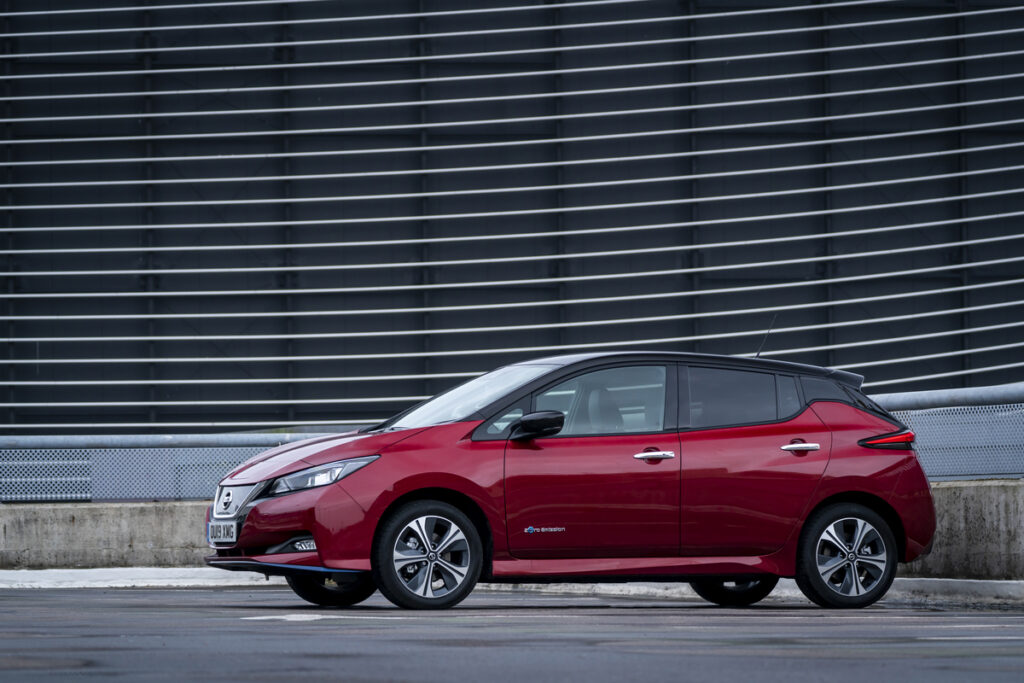
So the Nissan will compete in the same territory as Hyundai’s Kona Electric Elite and Ioniq Electric Premium, plus the new Mini Electric.
It’s likely the Leaf e+ will come with equipment to match the that of the basic Leaf currently sold in Australia, which comes in a single grade that’s a close match for the Tekna-specification Leaf e+ tested in the UK.
This means standard Apple CarPlay and Android Auto, with connectivity and power options provided by Bluetooth, one USB port and a single 12-volt plug.
Sat-nav, reversing and frontal sensors and cameras, adaptive cruise control, auto headlights with high-beam assist, auto-dimming rear-view mirror, rain-sensing wipers, and a bunch of driver aids that includes autonomous emergency braking with pedestrian recognition and rear cross-traffic alert should also be standard tech in the Leaf e+.
Expect interior luxuries to include leathery seats with ultrasuede inserts and a leather-bound wheel. Both front and rear seats have heating, as does the steering wheel.
Also be ready for some surprising omissions. The steering wheel can’t be adjusted for reach, and the front seats must be adjusted manually.
These particular shortcomings the Leaf e+ shares with the basic version. But the extra money for the e+ buys around 100km more driving range from its larger battery pack, quicker DC fast charging and a motor that delivers a big increase in power. The battery pack warranty should be the same eight-year or 160,000km package as for the base Leaf.
This isn’t a bad deal, and the e+ upgrades will make the Leaf more appealing to those thinking of making the switch from ICE to EV.
Interior
Despite the tech and trimmings, the Leaf e+ cabin doesn’t feel especially classy. For materials and design the overall ambience is small-car mediocre. The Leaf e+ interior’s layout, plastics, switches and controls, and overall fit and finish are no match for a Mazda 3 or a Volkswagen Golf costing half as much.

Still, the Nissan is usefully spacious. The rear seat is a comfortable place for two adults, three at a squeeze. The luggage compartment is large, with 385 litres available under the parcel shelf. Flipping the 60/40-split backrest increases cargo capacity to nearly 1200 litres.
Up front, the seats are firmly supportive and all-round vision is better than some other small hatchbacks. Though the lack of steering column reach adjustment may annoy the very tall or very small, most people should be able to set up a comfortable driving position.
Charging the Leaf e+
As mentioned, the Leaf e+ brings a big increase in battery pack capacity, 62kWh instead of 40kWh. But these are gross figures and don’t take into account Nissan’s battery durability safety margins. The authoritative Electric Vehicle Database rates the usable capacities of the Leaf batteries at 36kWh and 56kWh respectively.
The Leaf’s two charging ports are under a flap in the centre of its nose. There’s a Type 2 for AC charging from a wallbox or normal power socket and a CHAdeMO for connecting to fast DC chargers.
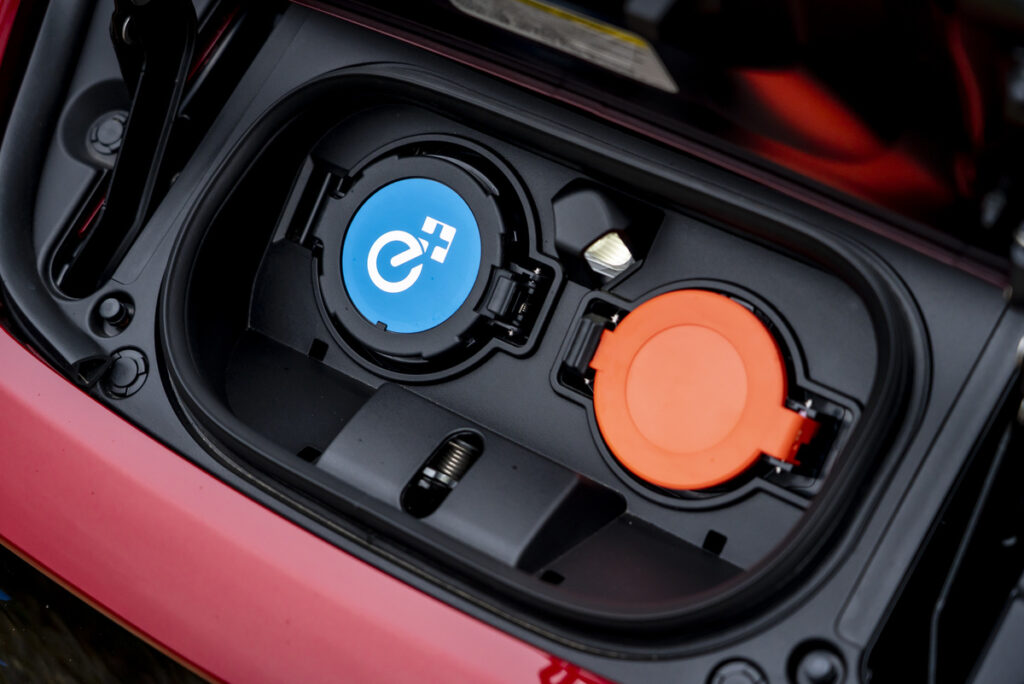
While the Leaf e+ has exactly the same on-board AC charging hardware as the base version, its CHAdeMO can accept DC fast charging at double the rate. Connected to a 100kW (or more) DC fast charger the Leaf e+ will take about 35 minutes to go from 10 to 80 percent charged.
During my time with the Leaf e+ I needed to use DC fast charging only once. A 50kW Ecotricity-operated charger took 32 minutes to deliver a 25 percent charge during a coffee and comfort stop on the M4 motorway. It was more than enough to give me the range required to complete my trip, and cost £4.89 or about $8.75.
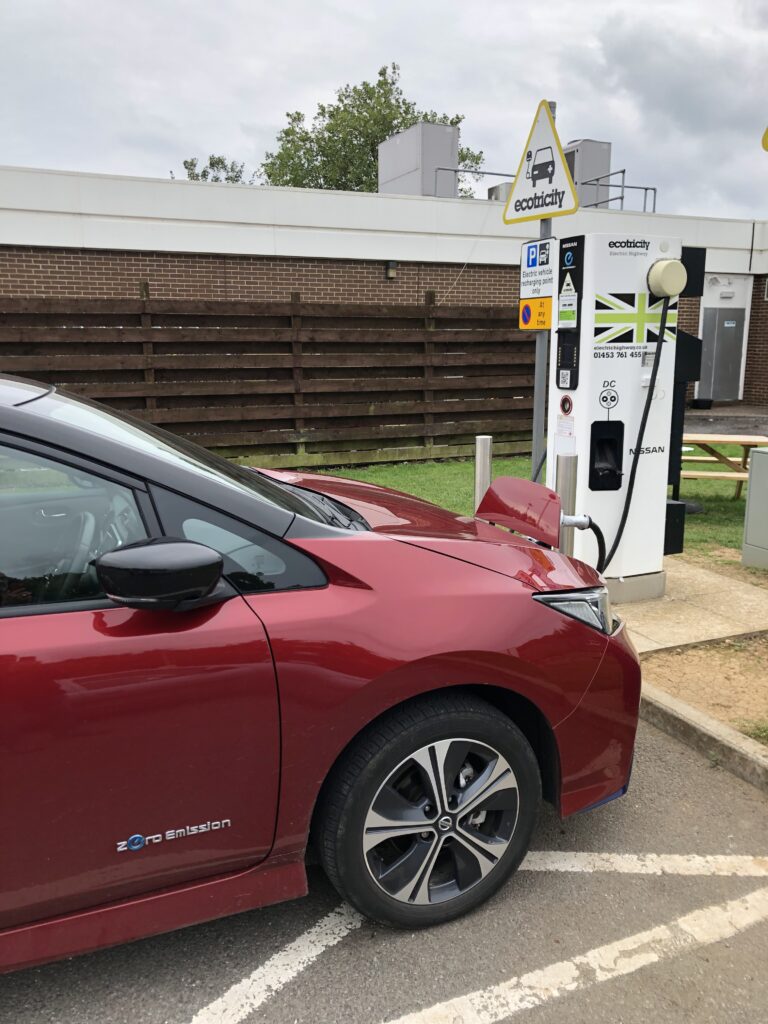
For all other charging I plugged the Leaf e+ into a standard British 2.3kW wall socket that delivers similar power to an Australian socket. Charging this way cost the equivalent of $0.23 per kWh, less than half the what I paid for the fast DC charge. The house I was staying at didn’t have a wallbox.
Charging this way is slow; a complete recharge takes more than 30 hours, so I topped up the battery each night. A wallbox can cut the 0 to 100 percent charge time to around 10 hours. The Leaf e+ has an on-board charger rated at 6.6kW, so a 7.4kW wallbox would be the best match for it. More powerful wallboxes won’t charge the Nissan any faster, but less powerful ones will take longer.
Performance and efficiency
The 160kW motor of the e+ brings a jump in performance over the 110kW base Leaf. Acceleration from a standing start is noticeably nippier, and the Nissan climbs even steep hills with absolute ease. It also feels lively at highway speeds.
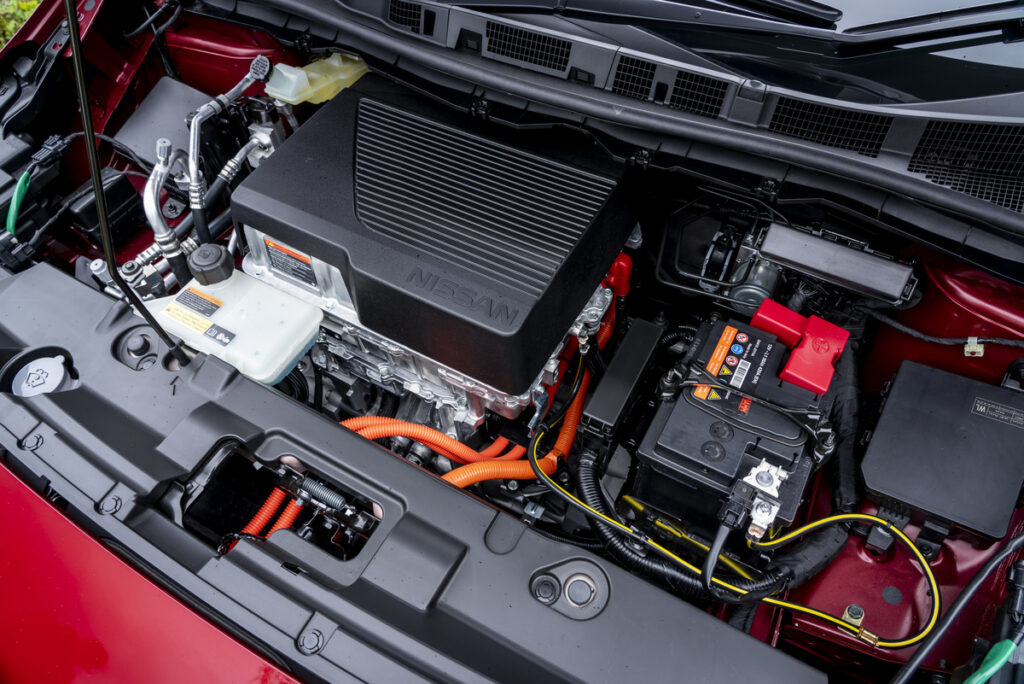
With a motor powerful enough to easily overcome the traction of the front tyres, it was good to find that Nissan has improved the traction control software of the Leaf e+. It was much better behaved when turning onto major roads and accelerating briskly up to speed, for example.
Mostly I drove in the Leaf e+’s Normal mode. Choosing Eco adds a little to driving range, but dulls the motor’s very enjoyable responsiveness.
And I seldom used the Nissan’s e-Pedal switch, which enables one-pedal driving by increasing regenerative braking. It was useful in very slow-moving afternoon rush-hour traffic in London, for example. But most of the driving I did was on minor country roads or motorways, and the Leaf e+ felt more natural to drive without e-Pedal.
The biggest day of driving with the Leaf e+ was 315km. This drive used 96 percent of a full charge. Much of the journey was on major roads and motorways, conditions guaranteed to increase the energy consumption of an EV.
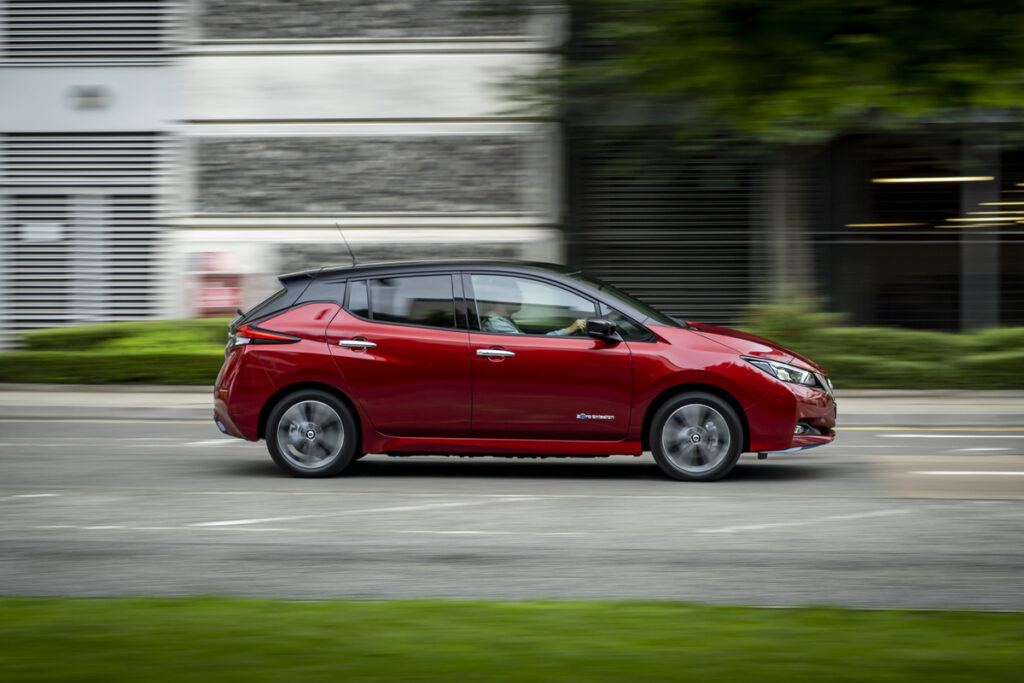
With a driving mix leaning more to urban driving, the Leaf e+ should be capable of covering its WLTP driving range of 385km. What’s clear from this test is that most drivers, most days, can count on the Leaf e+ being easily capable of doing 300km-plus on a charge.
According to both my own back-of-envelope calculations and the trip computer of the Leaf e+, my average energy consumption over 1500km was 17.5kWh/100km. That’s a little better than its official European rating.
Ride and handling
While the Leaf is quick in a straight line, it’s not the kind of car that’s fun to hustle along on a winding road. The suspension is clearly set up for ride comfort, something more drivers are likely to more often appreciate than sporty handling.
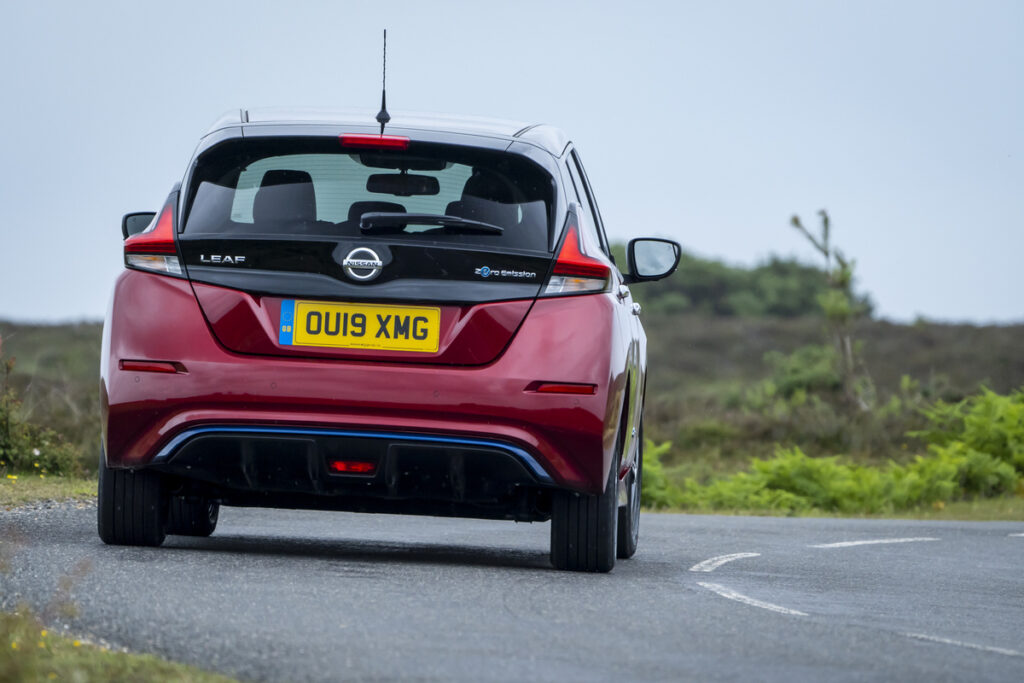
But the suspension is too soft for rough roads. The rear shock absorbers don’t do a great job of smoothing movements of the Nissan’s body in such circumstances. The lurching is enough to sometimes make rear-seat passengers queasy.
The car’s 215/50R17 Dunlop Enasave EC300 tyres aren’t the grippiest rubber around, but the Leaf e+ is stable and predictable in everyday driving.
Mostly… The forward collision warning system would occasionally, and always surprisingly, false alarm. Also, the lane departure and lane-keeping assist features were so annoying and intrusive that I turned them off (most lane departure systems aren’t very good).
Talking point
Both the normal Leaf and Leaf e+ are set to become the first V2G (vehicle to grid) capable EVs sold in Australia. What V2G means is that the Nissan’s battery becomes a bi-directional energy store.
It can be used to supply power to stabilise the electrical grid, thus helping prevent blackouts, or as an energy store for an off-grid home.
The technology is enabled by the Nissan’s CHAdeMo connector, which was designed from the start to be bi-directional.
A fleet of 51 Leafs are involved in a trial of V2G currently under way in the ACT.
Safety
The Leaf e+ will wear the same five-star ANCAP (Australian New Car Assessment Program) rating as the standard Leaf. The Nissan, which comes with six airbags, has no serious passive safety problems, and its active safety technology was found to function well by ANCAP.
Verdict
Will the 300km-plus driving range of the Nissan Leaf e+ make it more attractive to Australian EV buyers, despite its higher price? After two range-anxiety-free weeks with it, I think so.
Other important improvements are faster DC charging and snappier performance, but the Leaf e+ doesn’t much alter the Nissan’s intrinsic strengths and weaknesses.
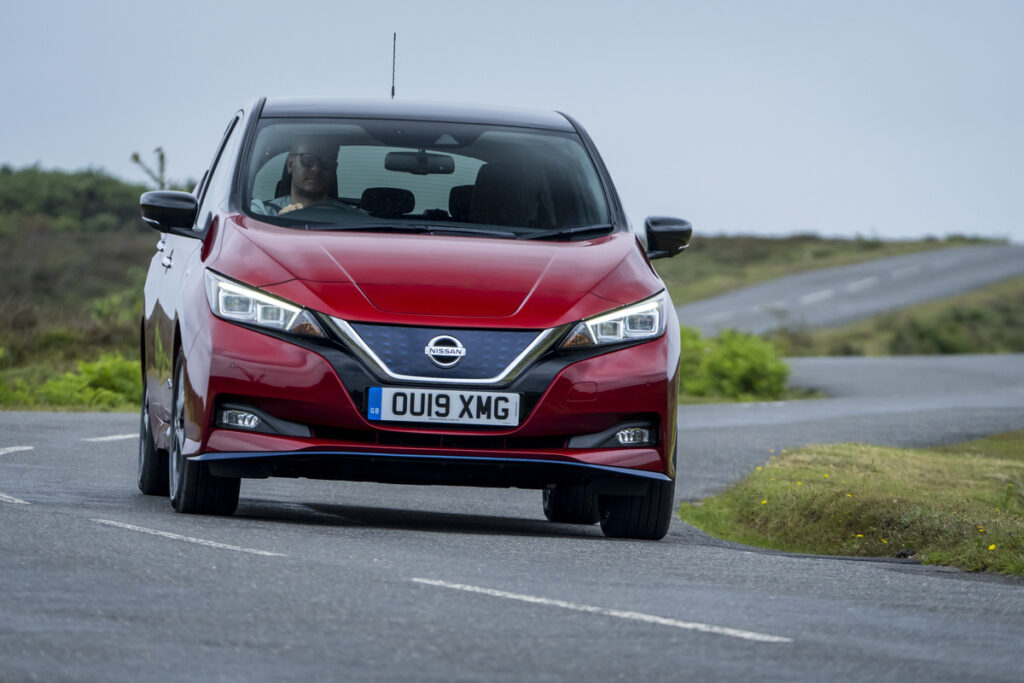
On the plus side, it’s a perfectly sensible everyday car. Roomy, quick, refined, and energy efficient, it’s a very easy thing to live with day-to-day. The standard equipment, especially the infotainment, driver assist and active safety tech, is likely to impress.
On the minus side, it’s no excitement machine. Though quick, the Leaf e+ lacks the dynamism and sense of driver connection that the best ICE-powered small hatchbacks offer. Its suspension should also deliver a smoother and more disciplined ride.
But judged against the handful of relatively affordable EVs on sale in Australia, the Nissan is quite competitive. I suspect Nissan Australia will heave a small sigh of re-Leaf when the e+ finally arrives…
Nissan Leaf e+ specifications
Price: $62,000 (estimated; due in first half of 2021)
Basics: EV, 5 seats, 5 doors, hatchback, front drive
Range: 385km (WLTP)
Battery: 56kWh
Battery warranty: 8 years/160,000km
Energy consumption: 18.0kWh/100km
Motor: 1, front, 160kW/340Nm
AC charging: 6.6kW, Type 2 plug
DC charging: 100kW, CHAdeMO plug
0-100km/h: 6.9 seconds

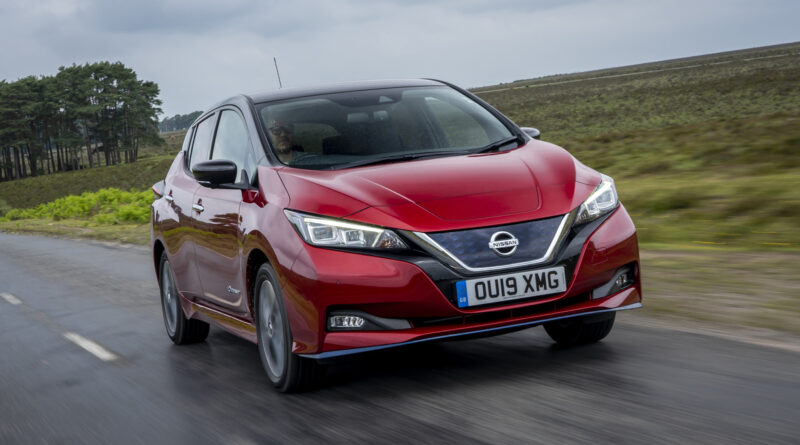

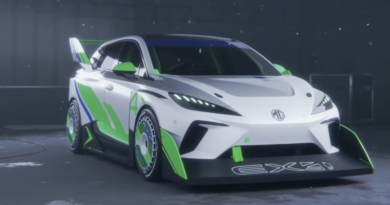
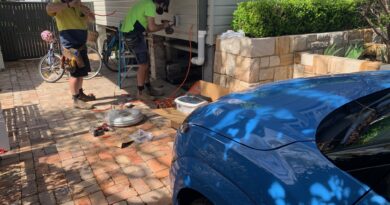
Its very disappointing. I keep waiting for an affordable EV ( which doesn’t mean cheap, just good value for money) and this is definitely not it. This is not a $60k + car, no way. Appreciate the bigger range but the current Leaf is already over priced. This new one would be good value at $52k (or thereabouts). I suppose I’ll just have to keep waiting.